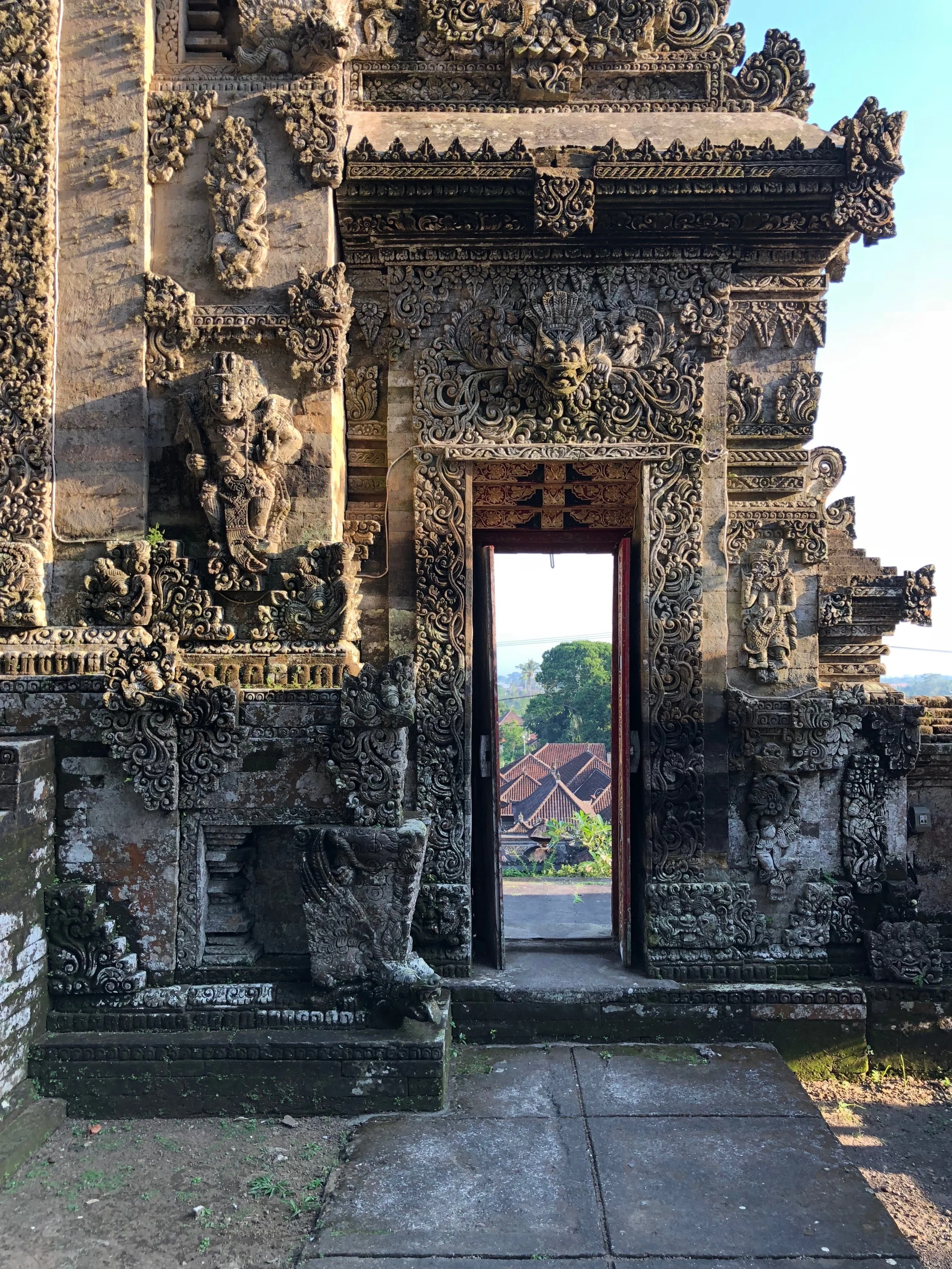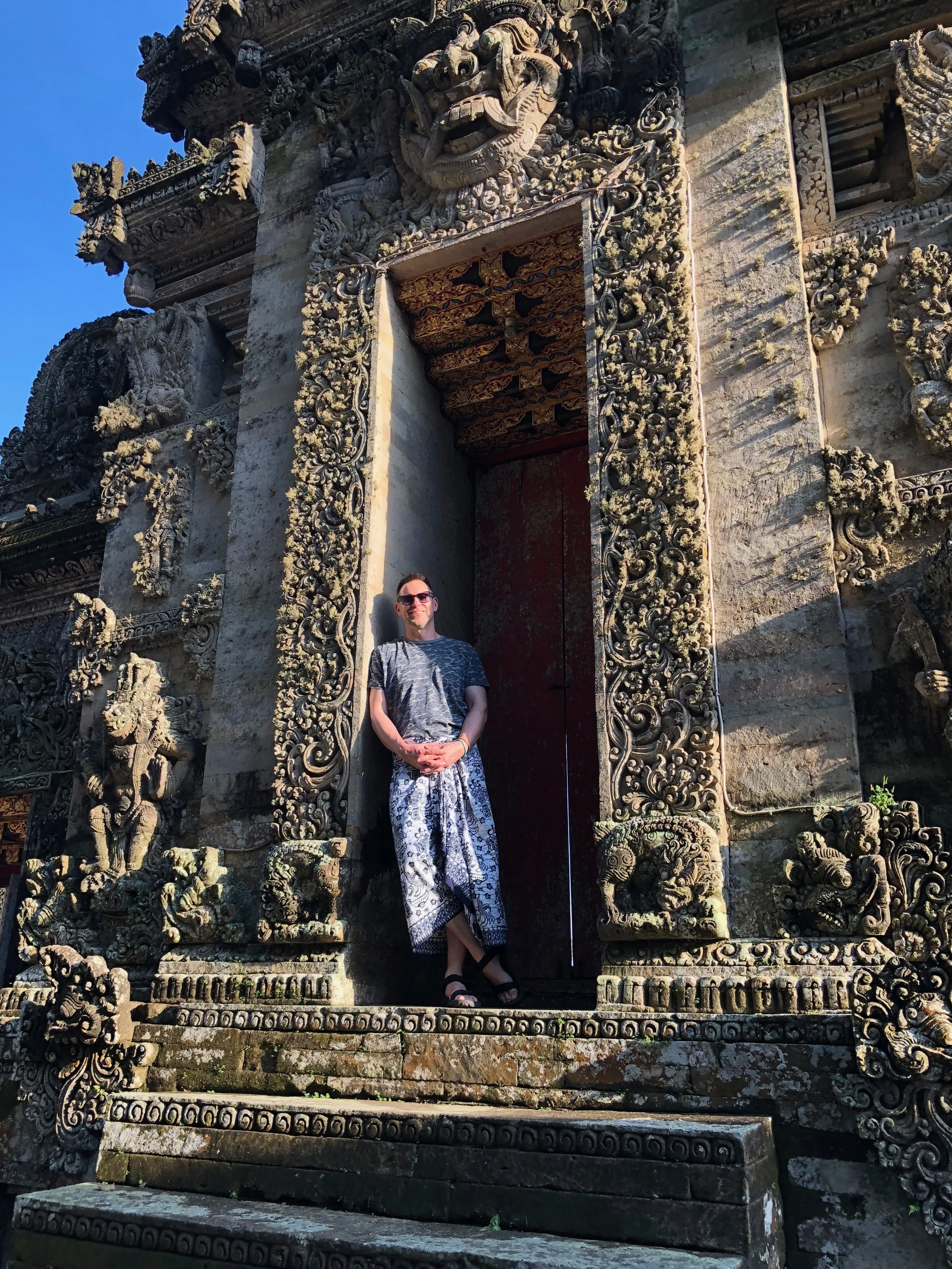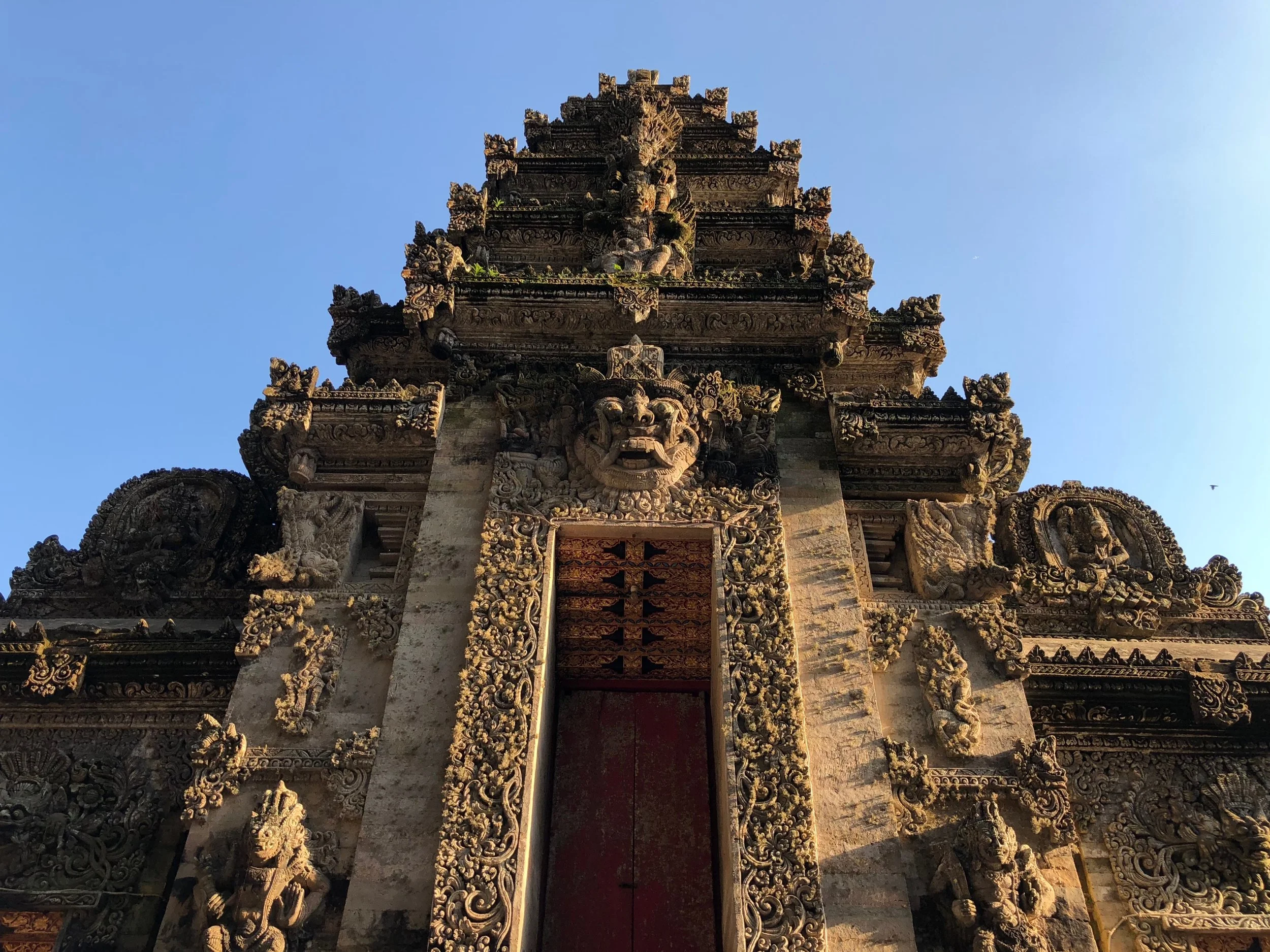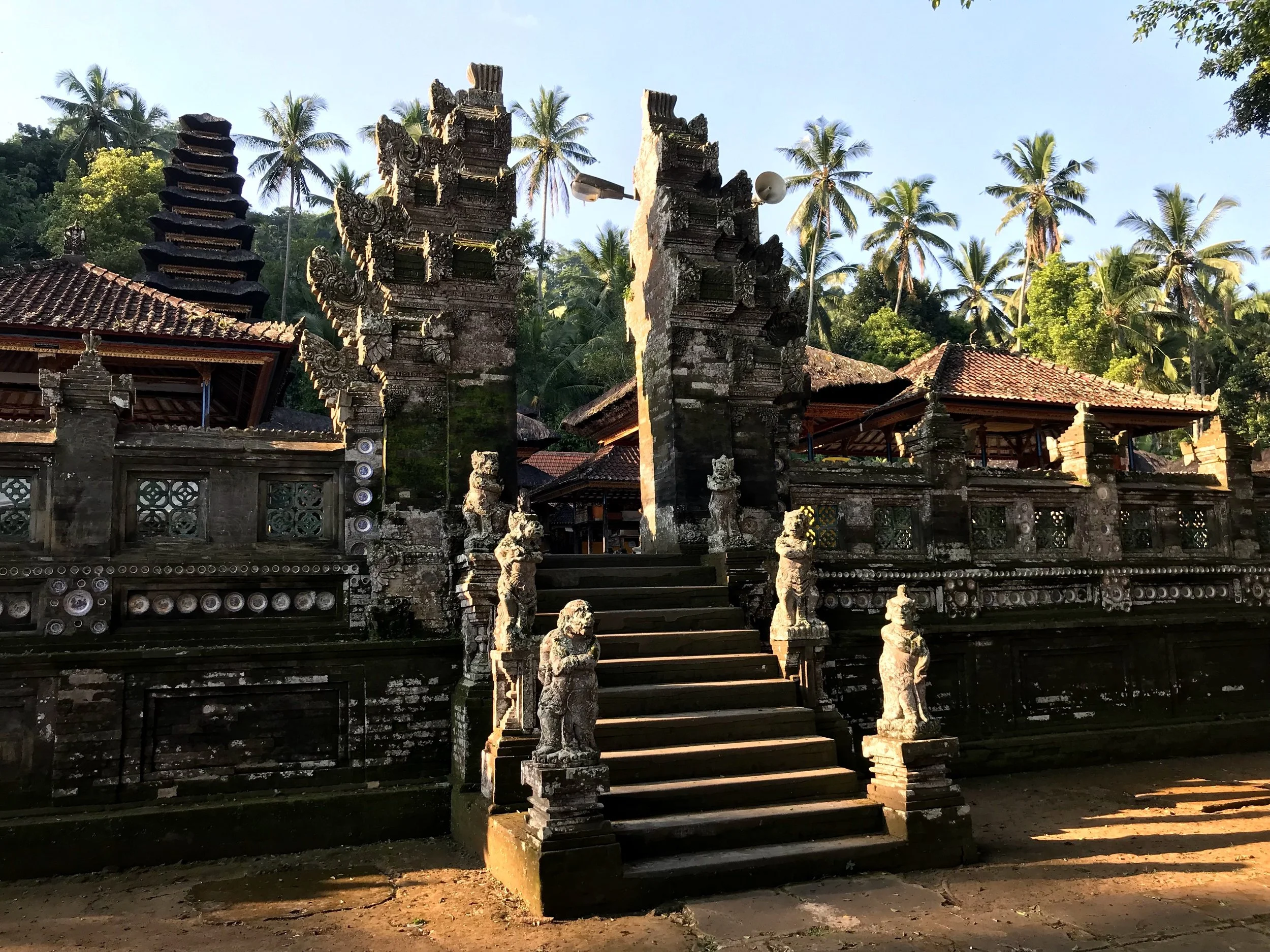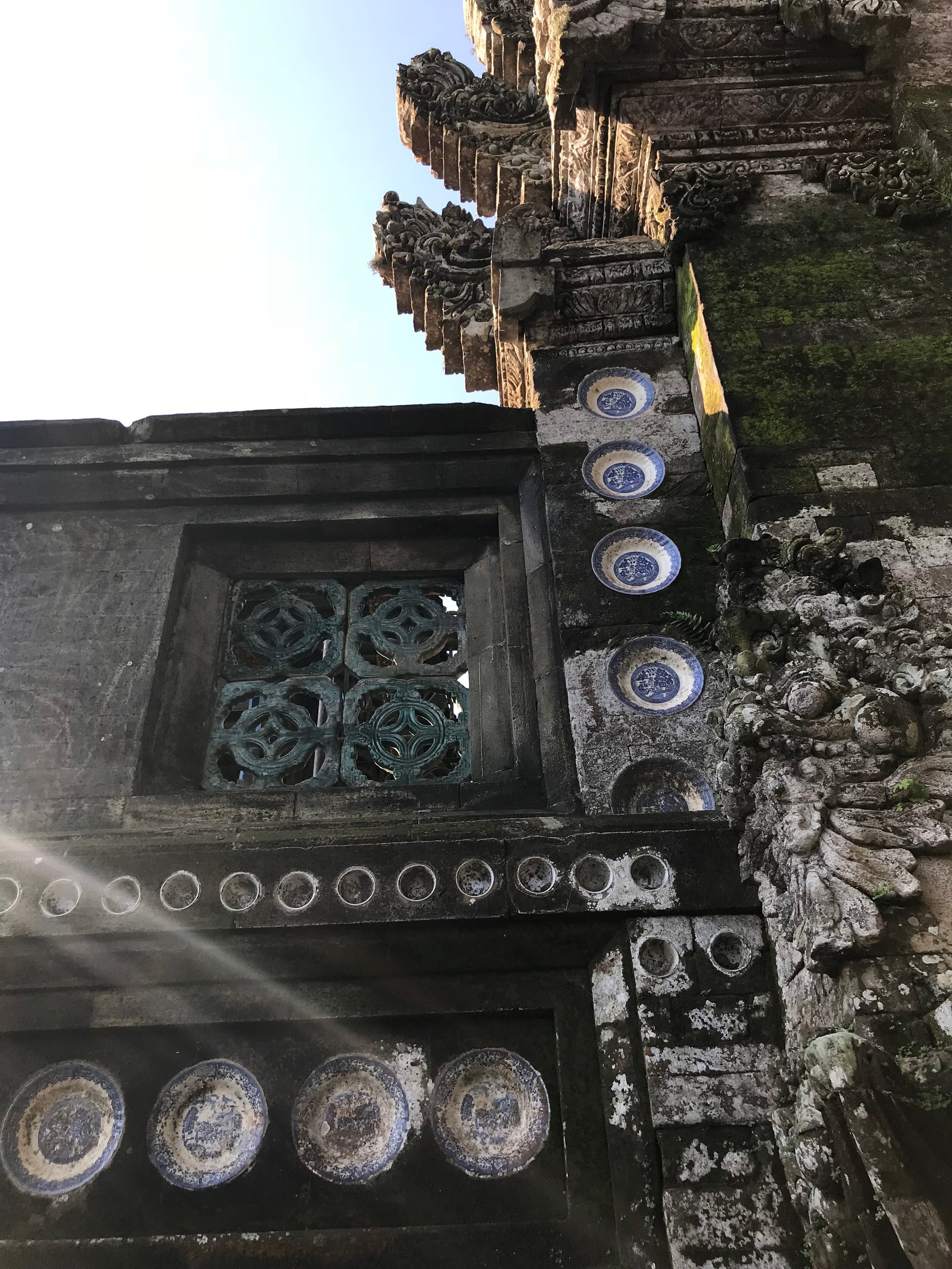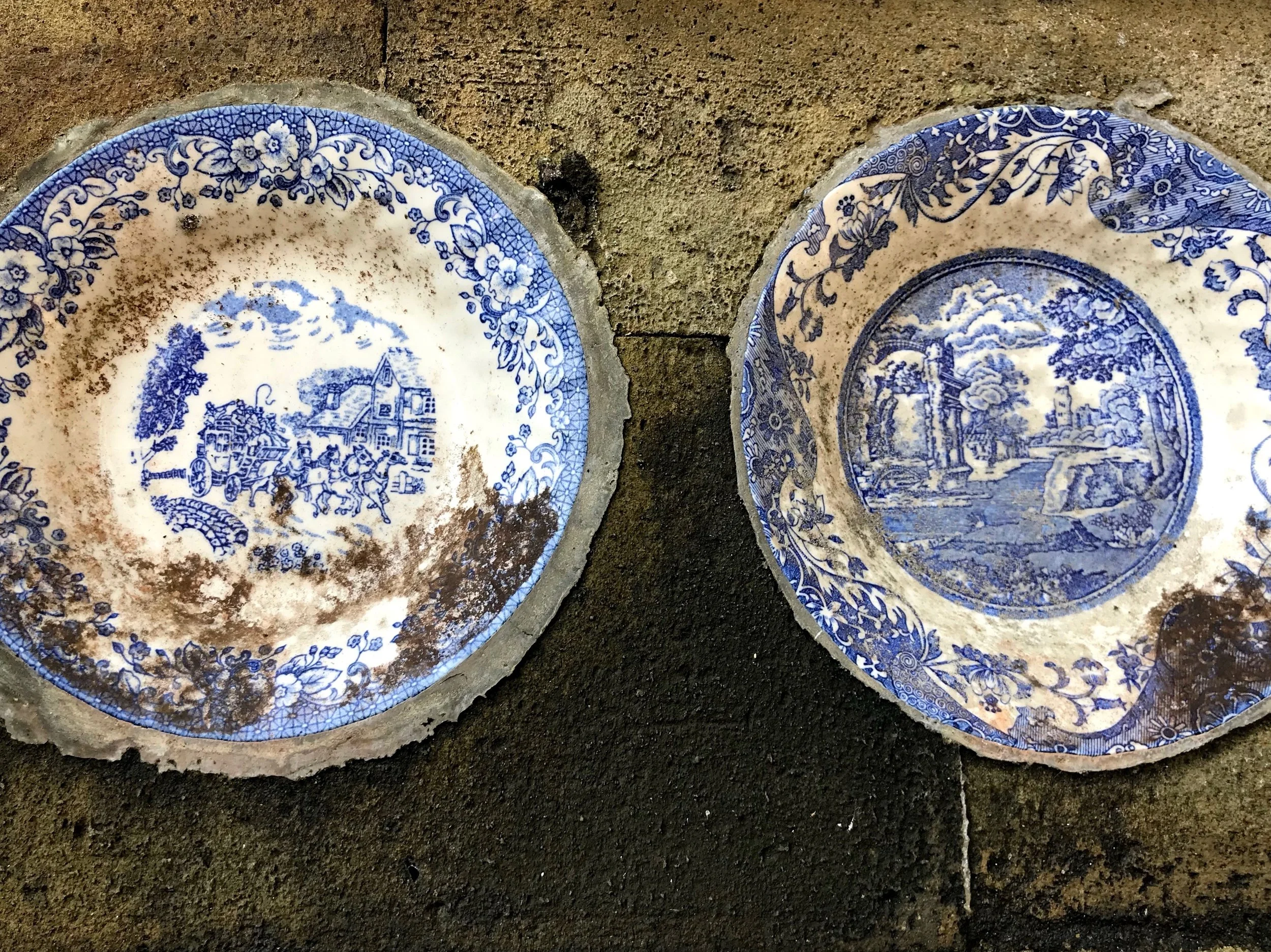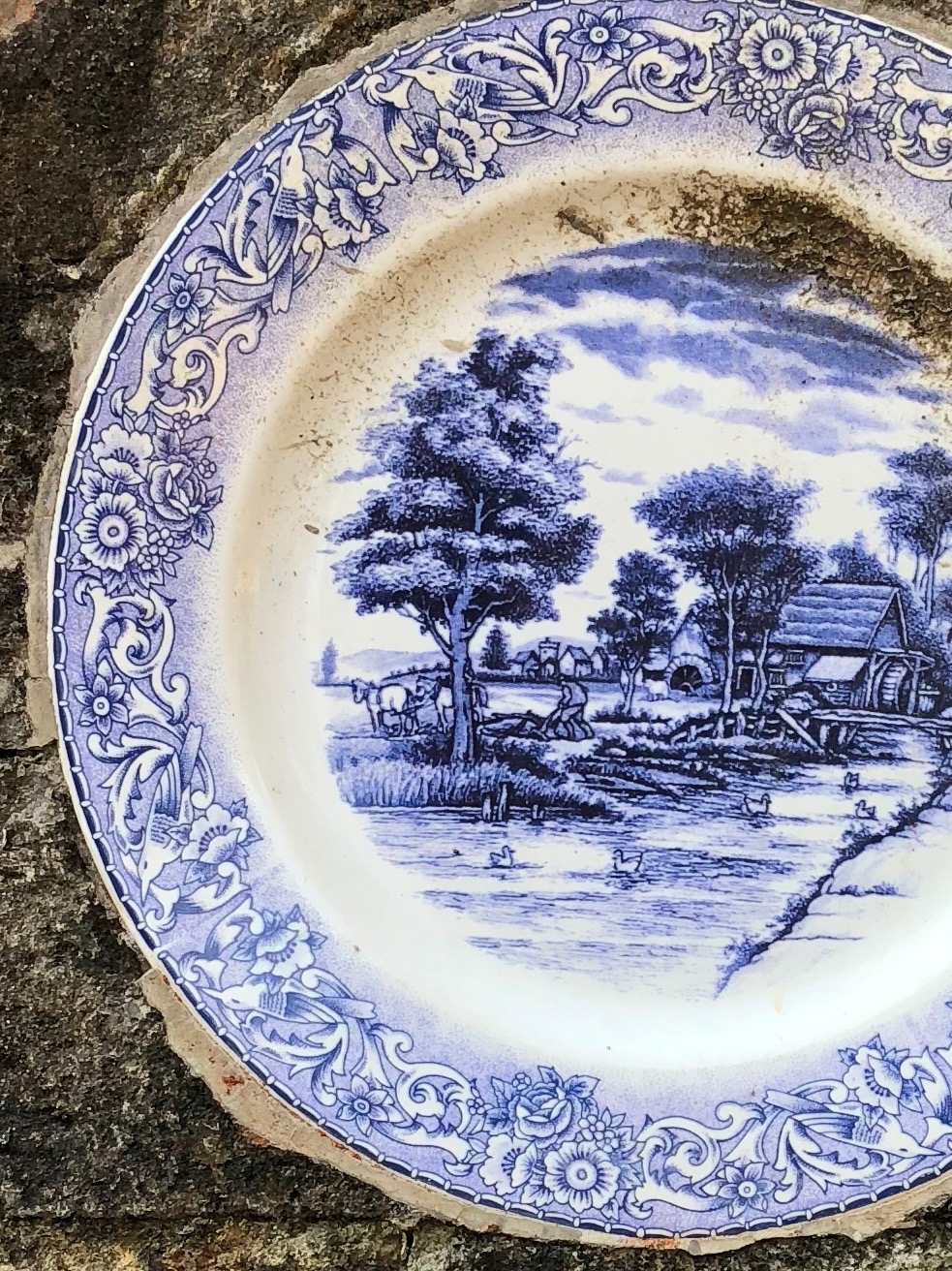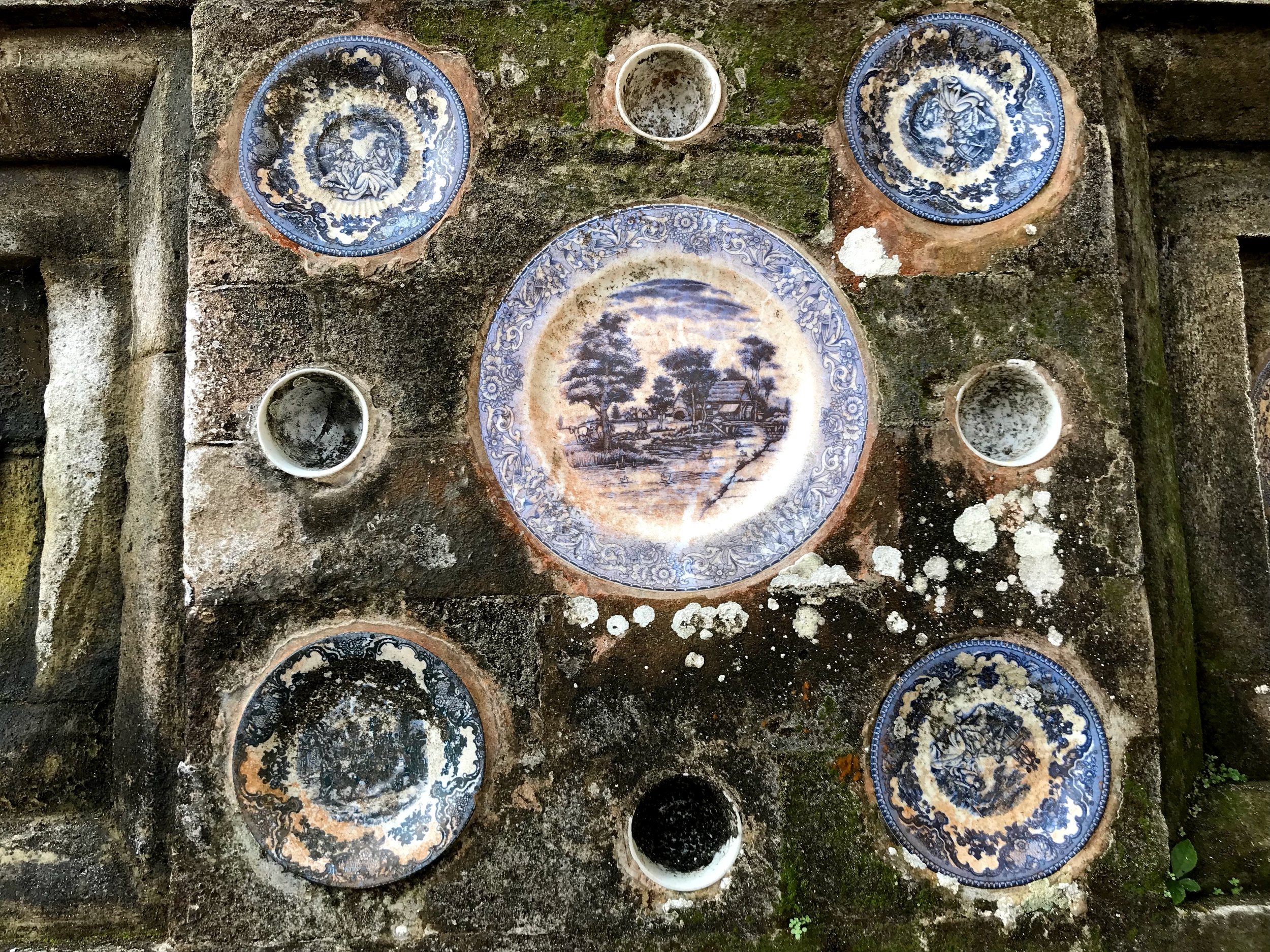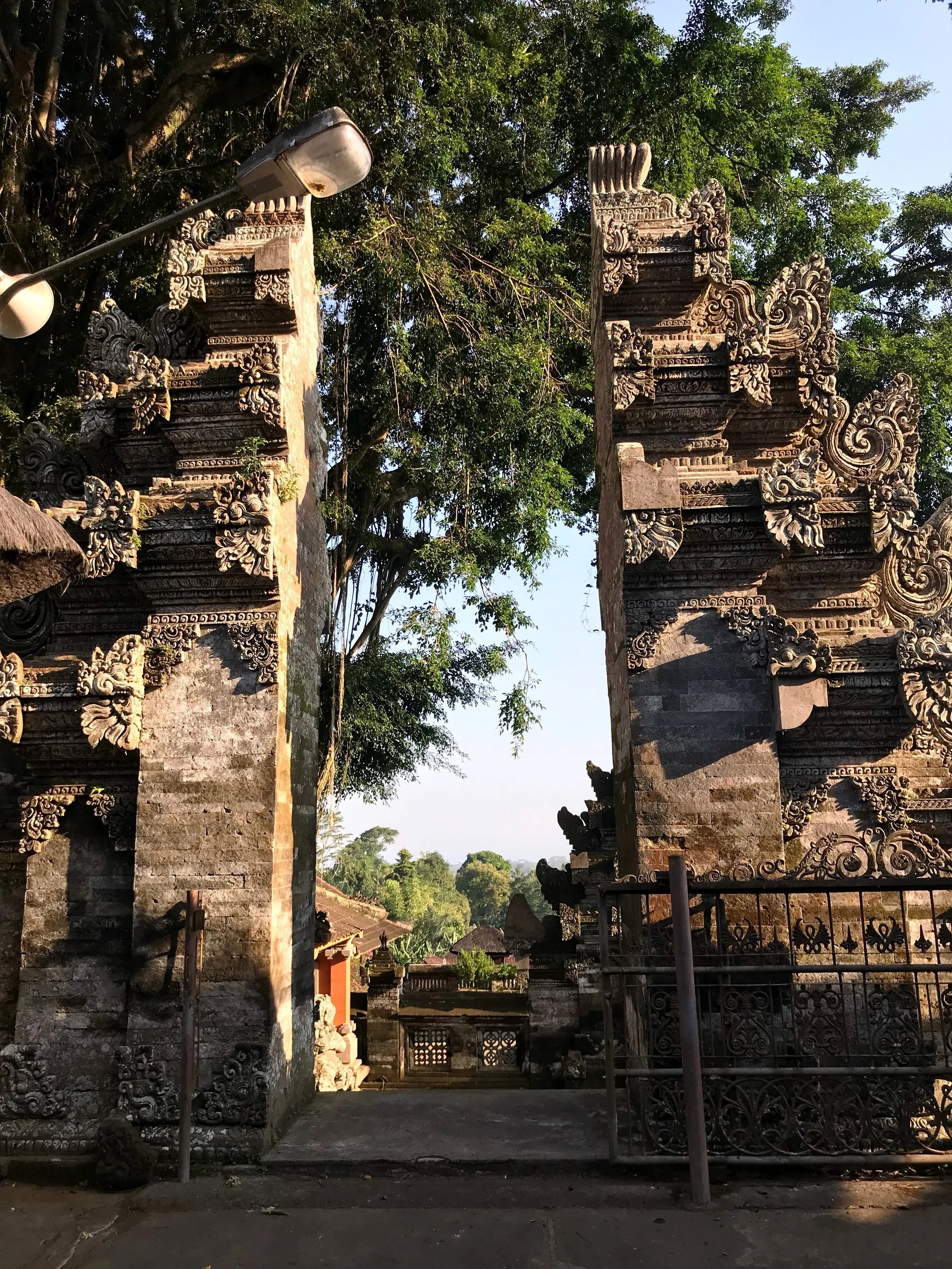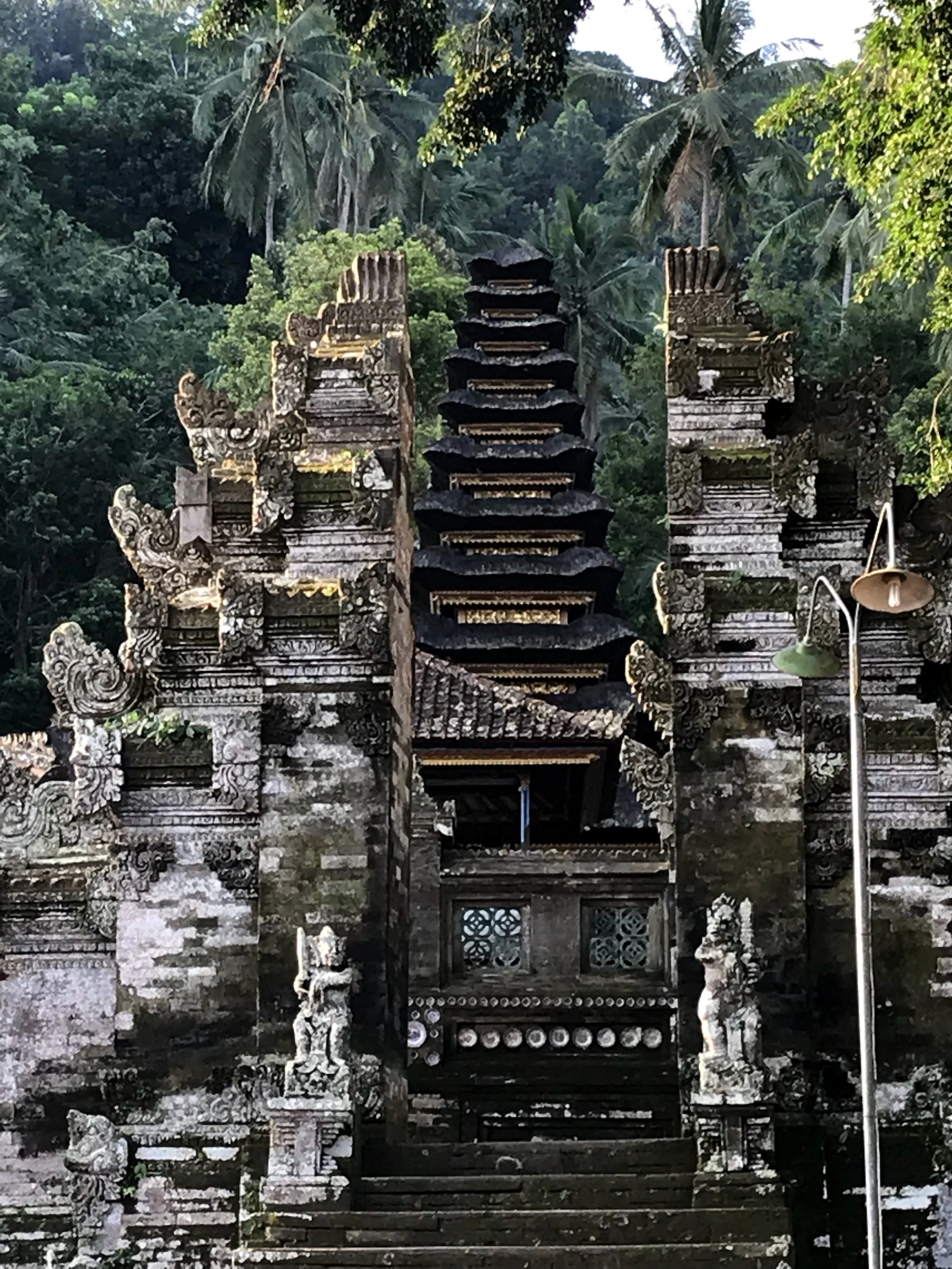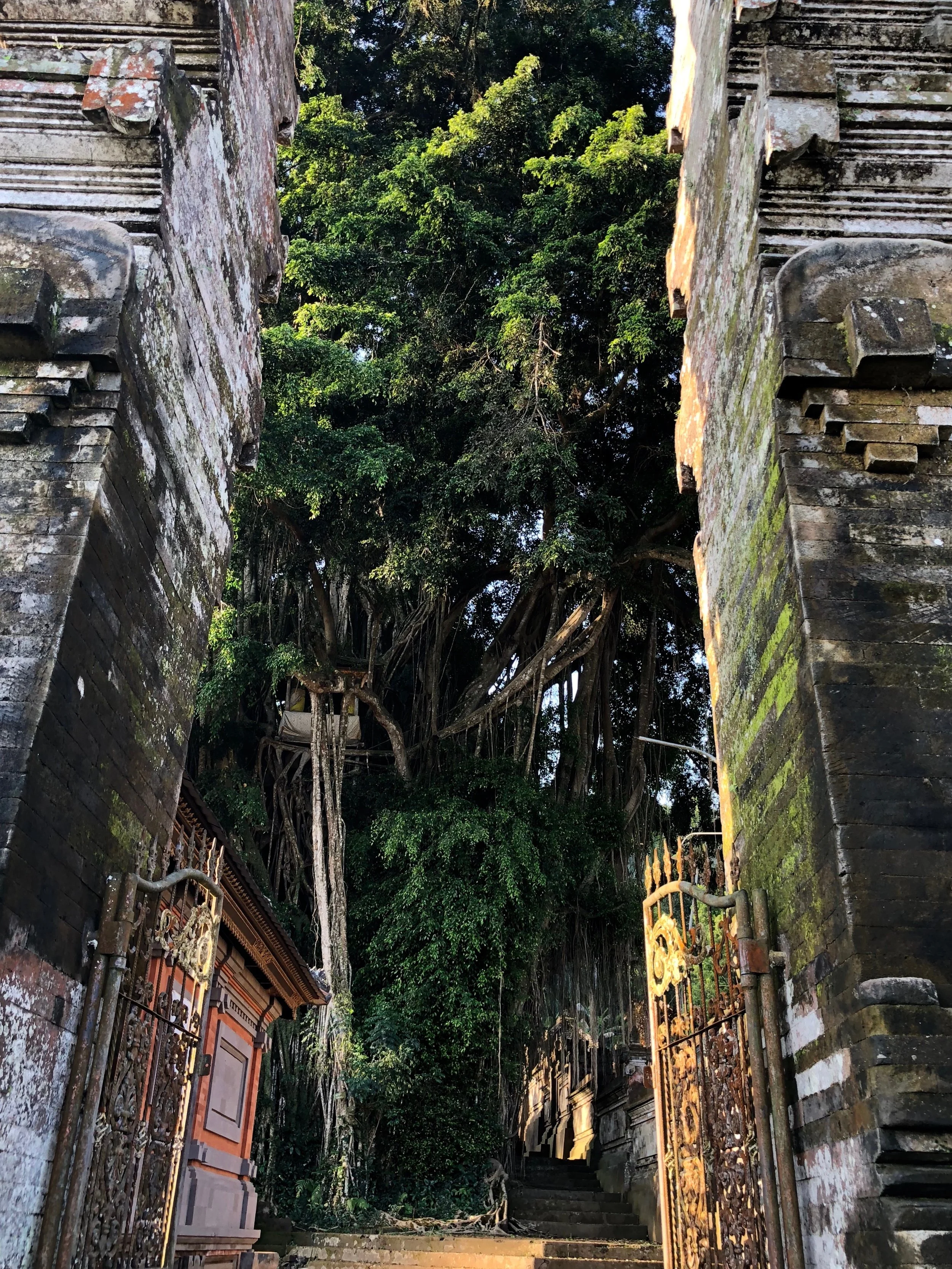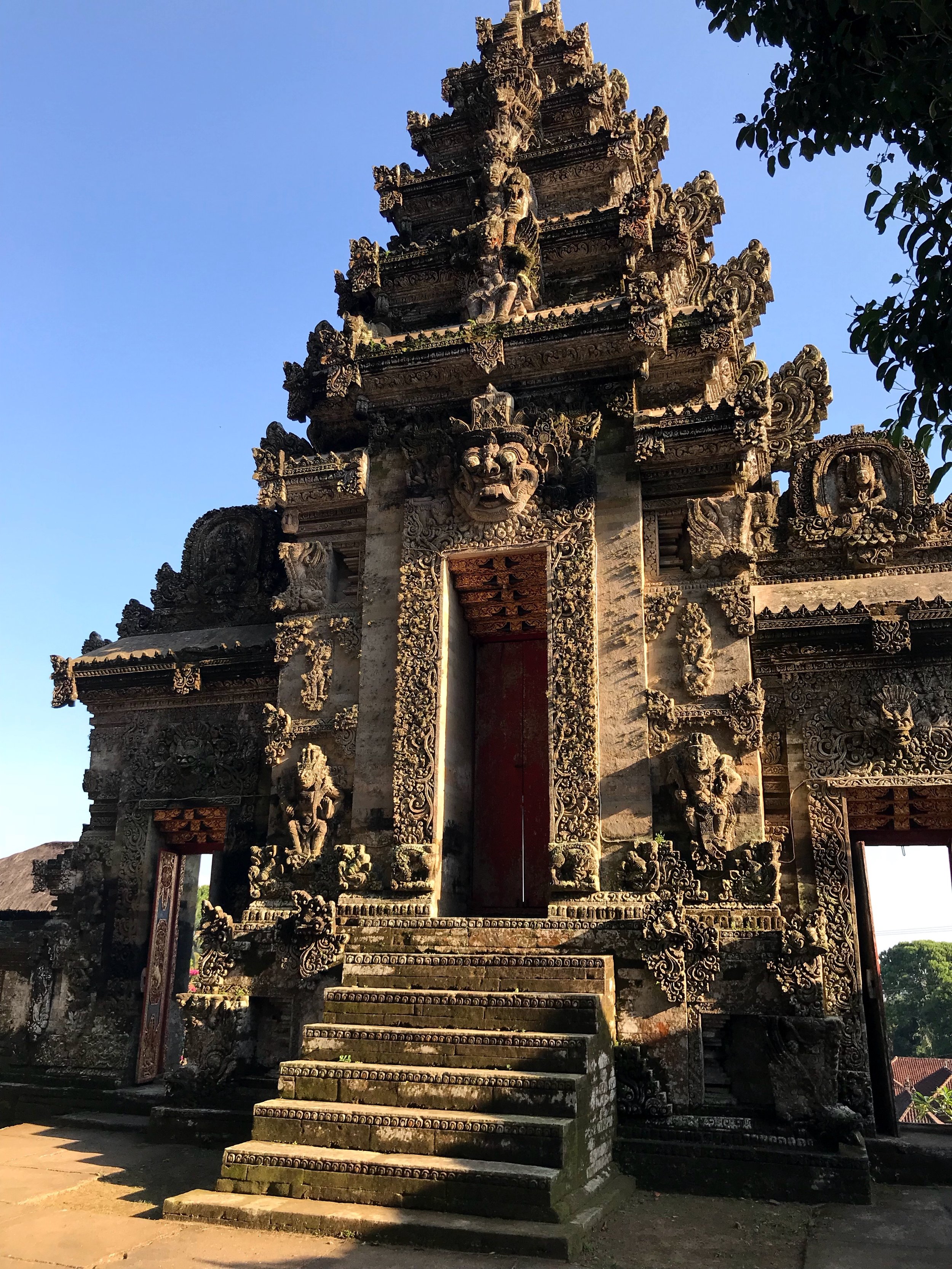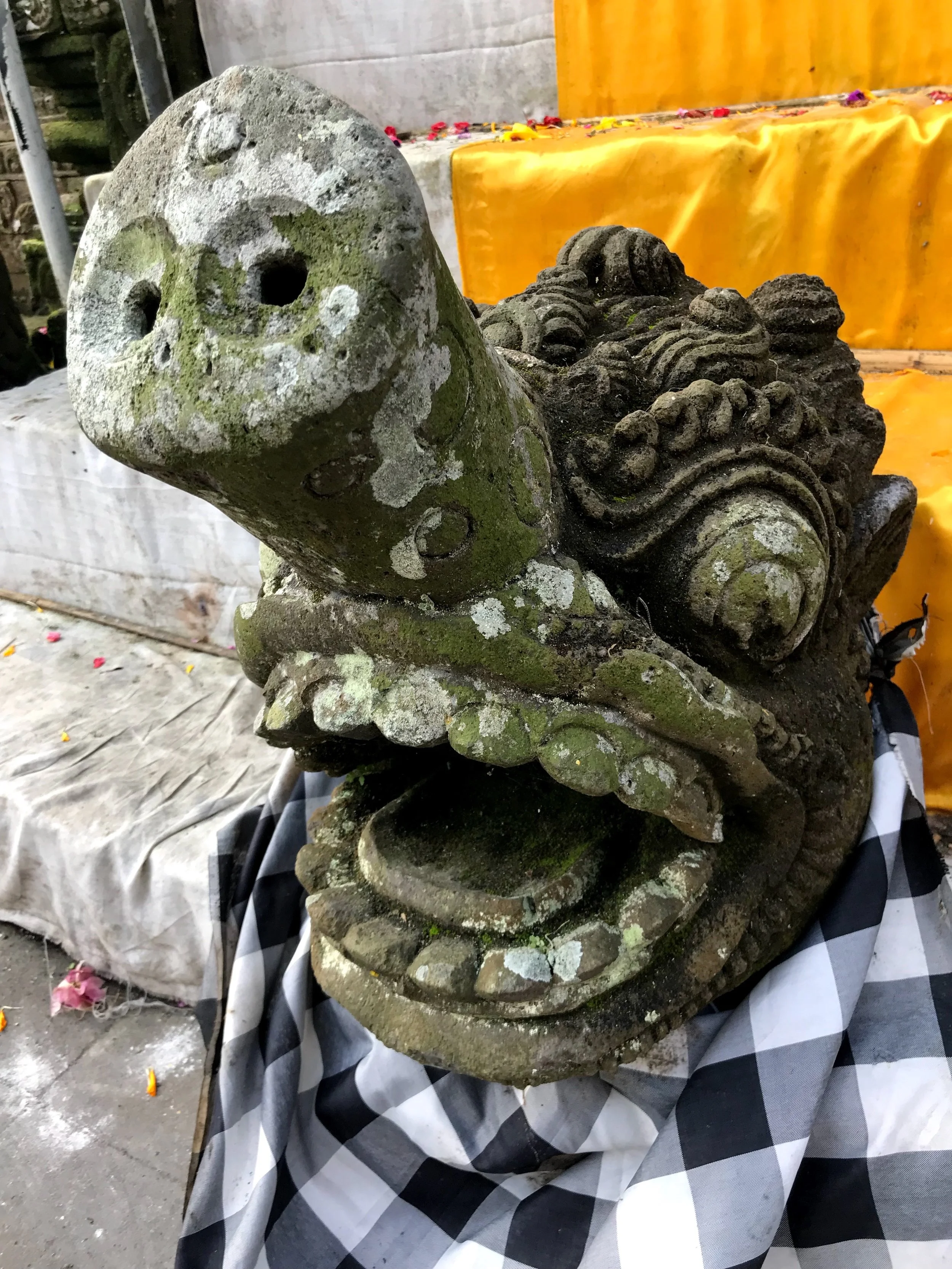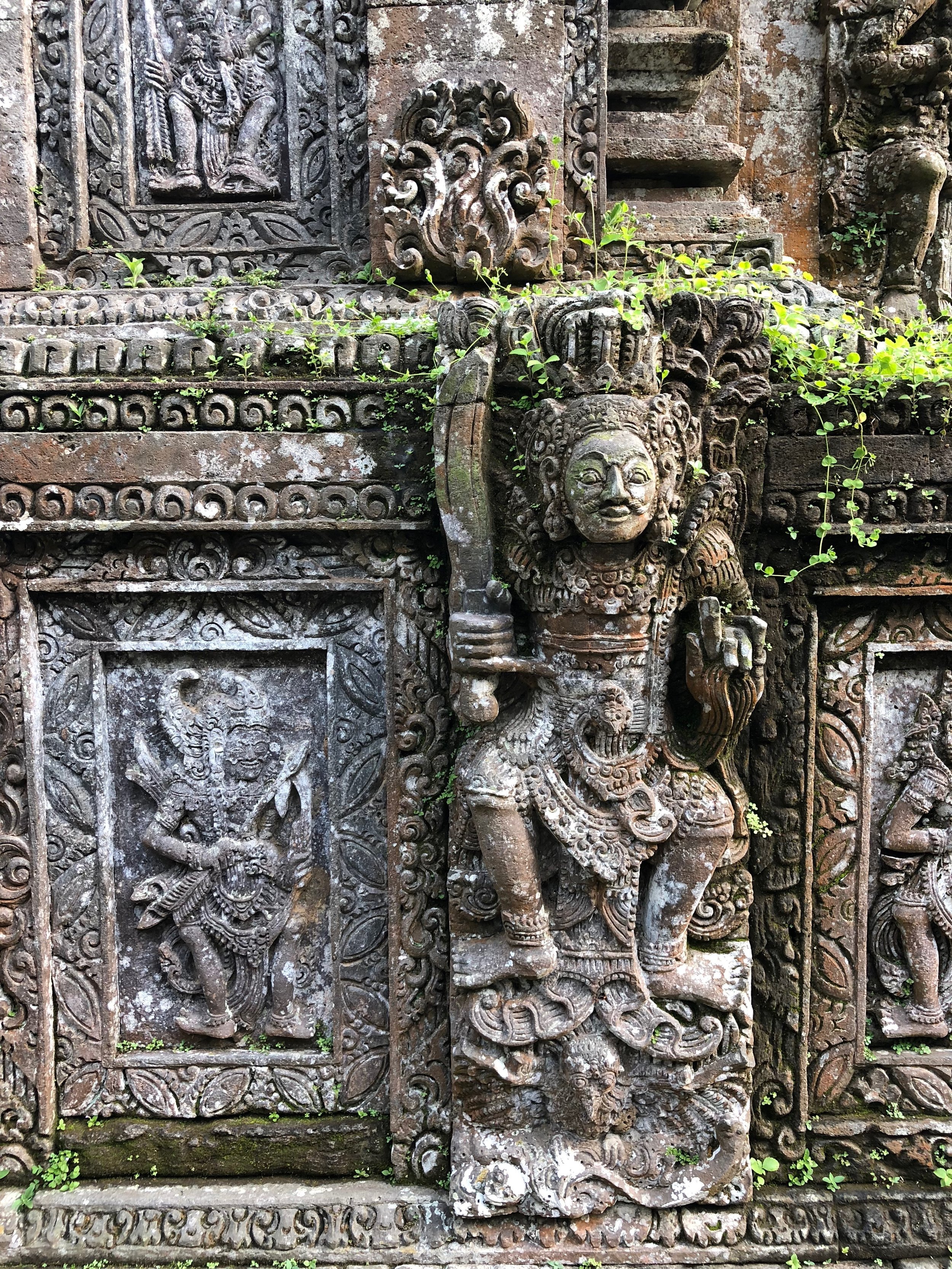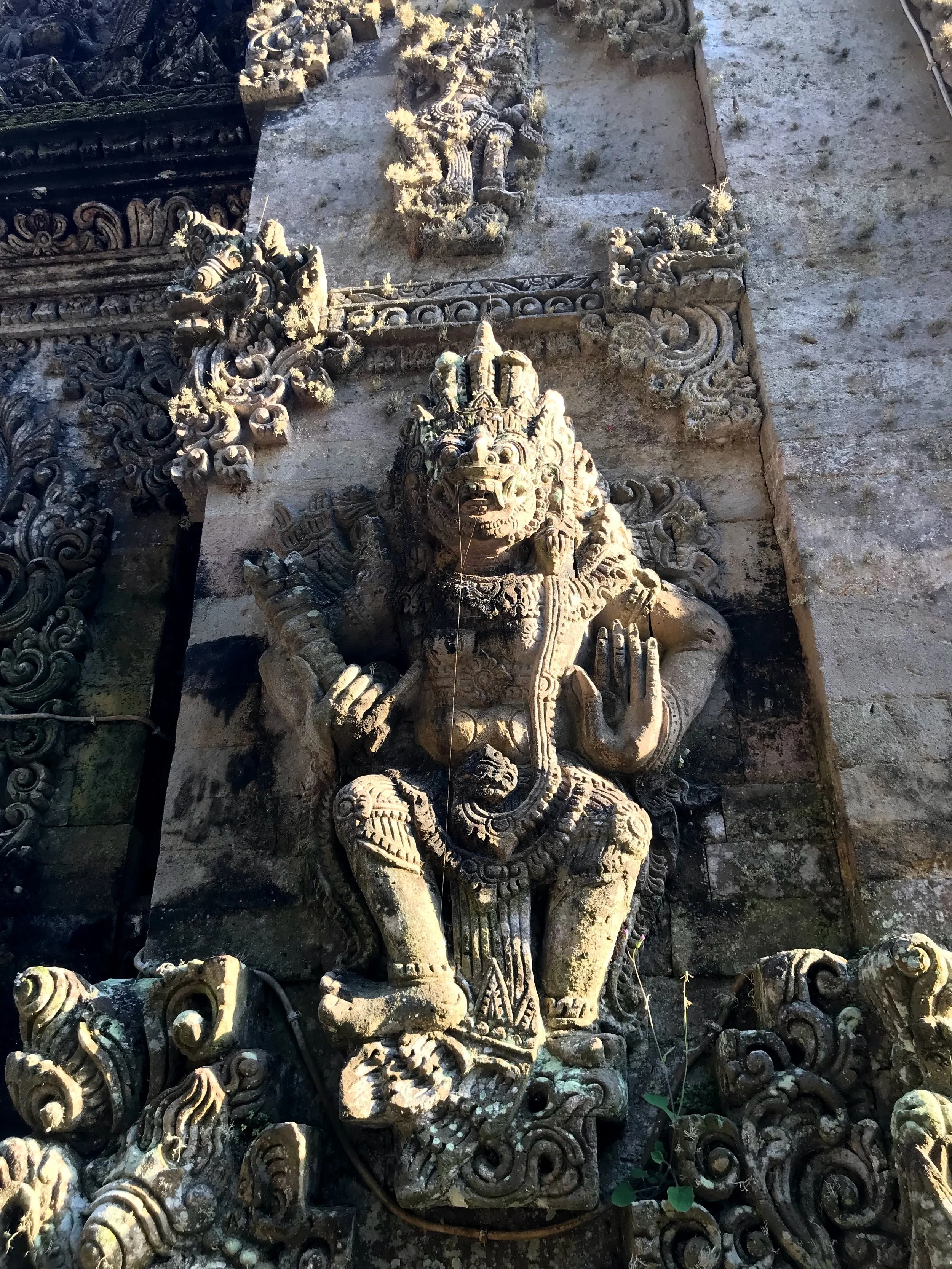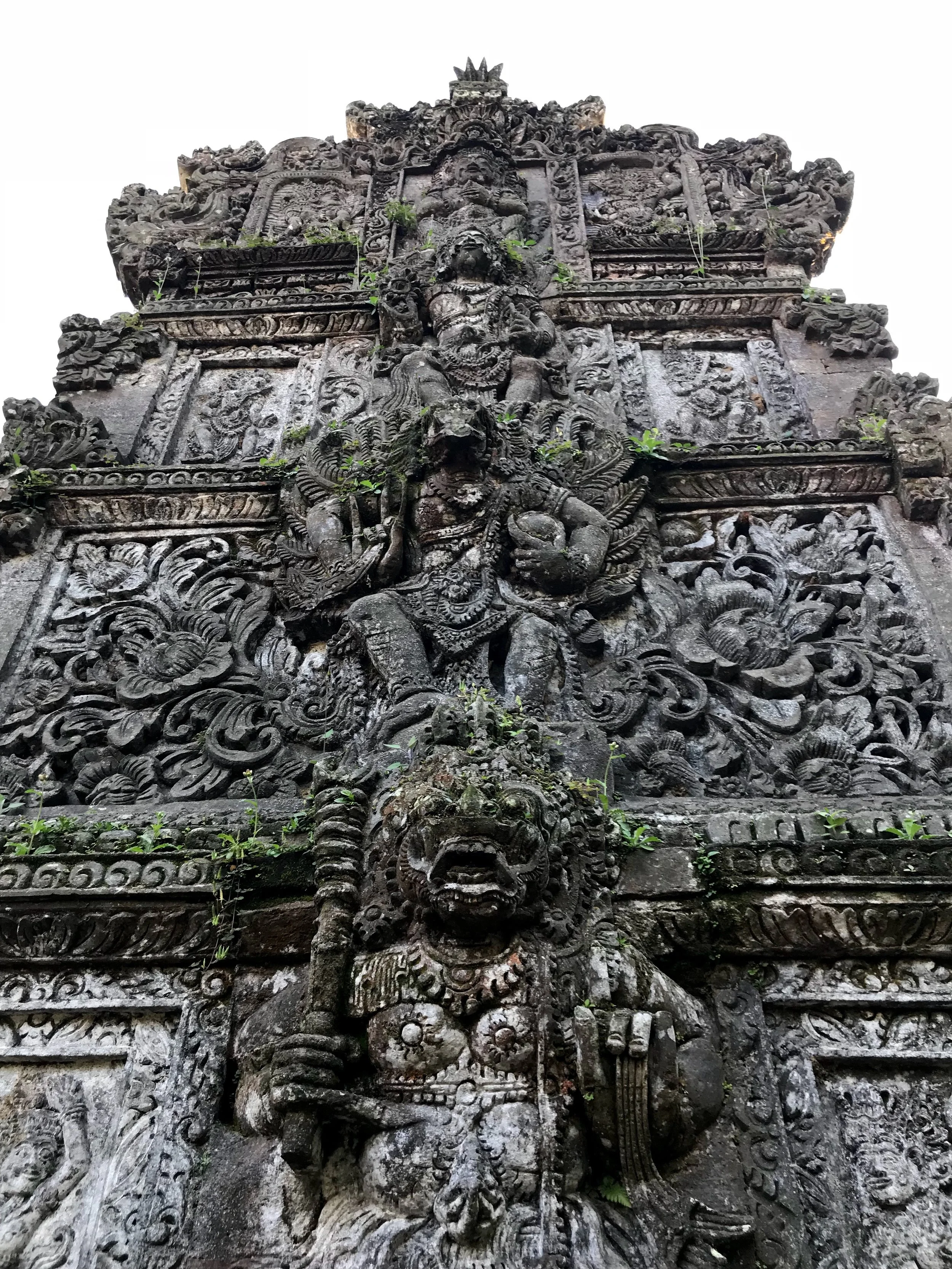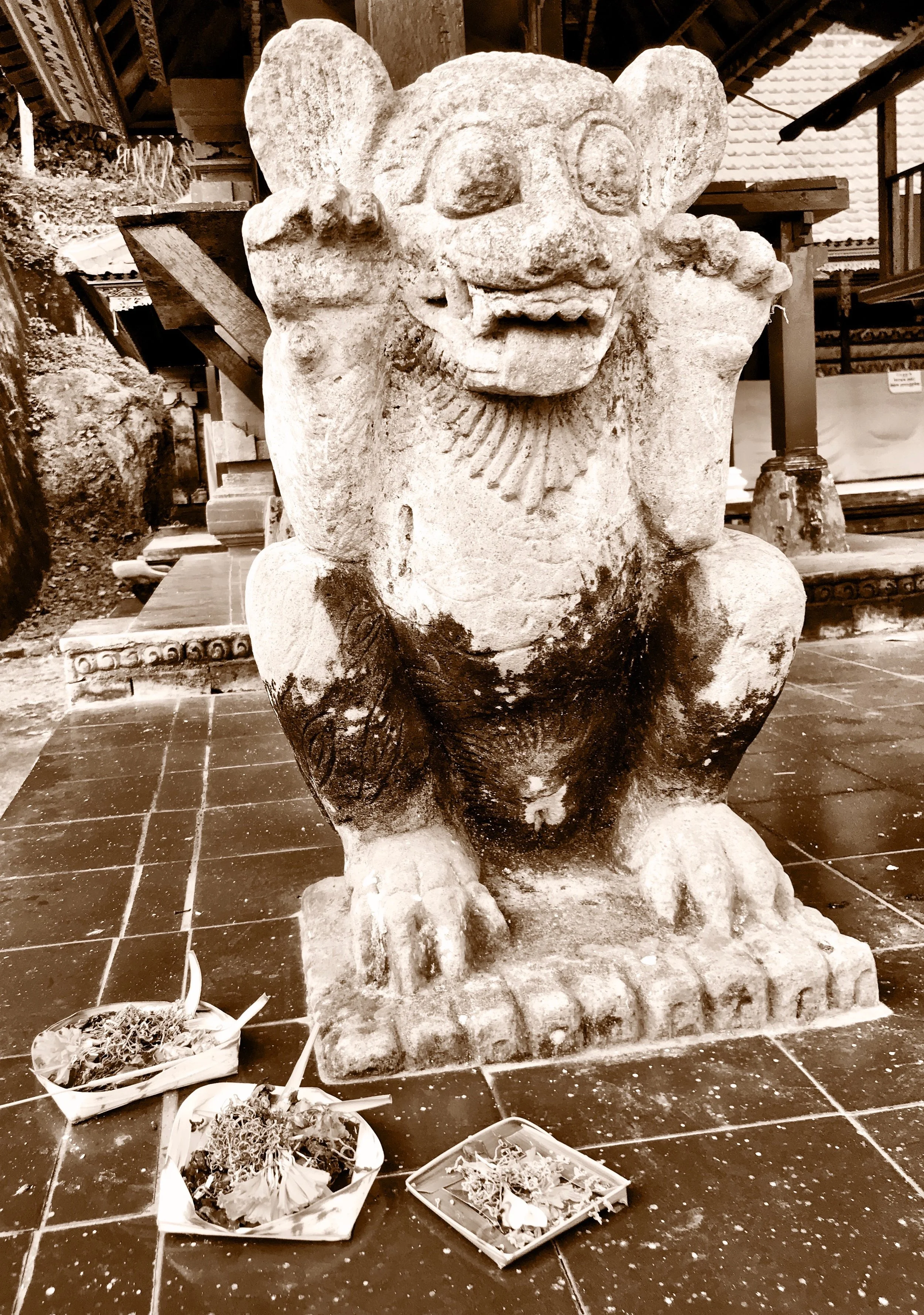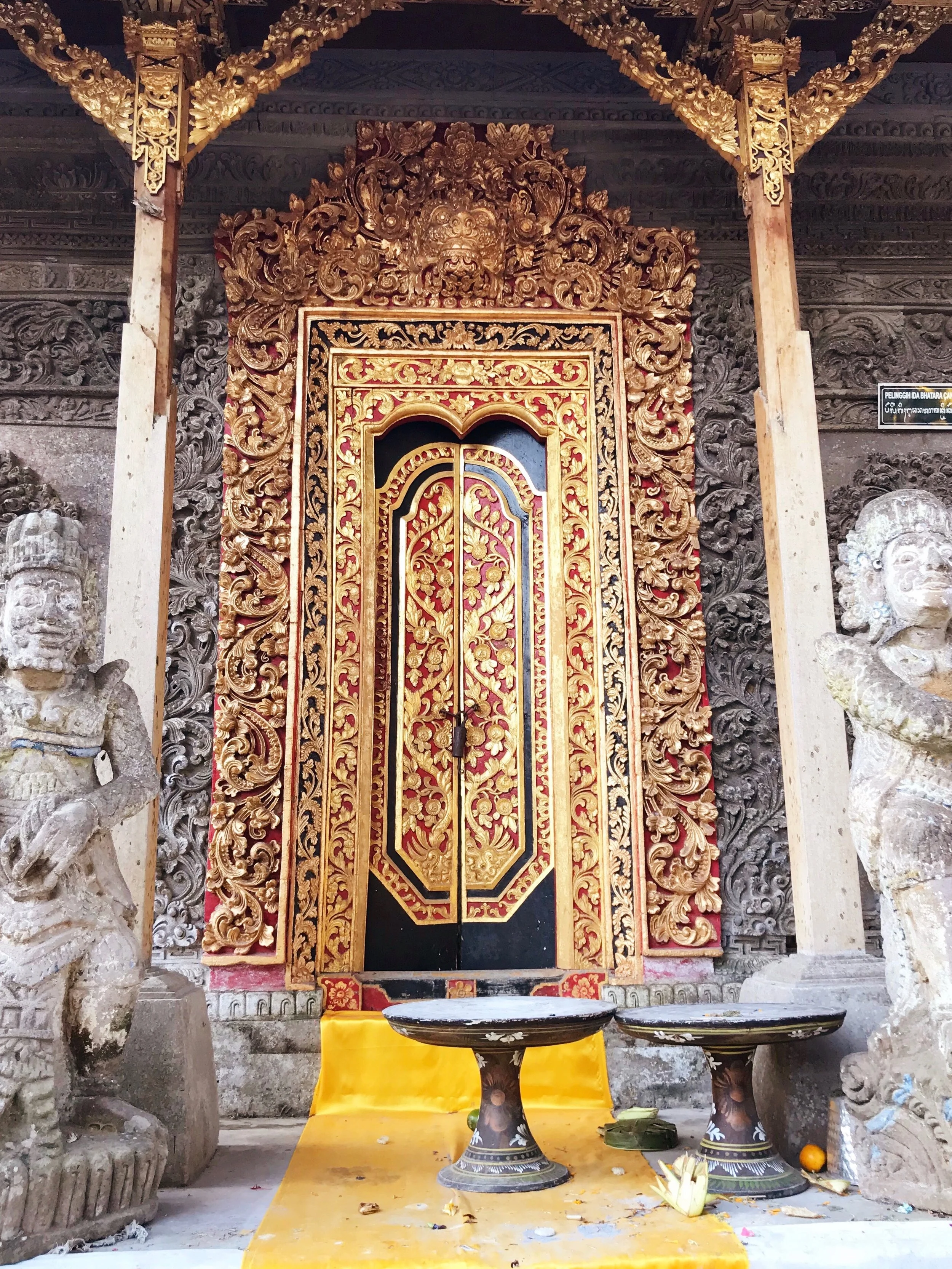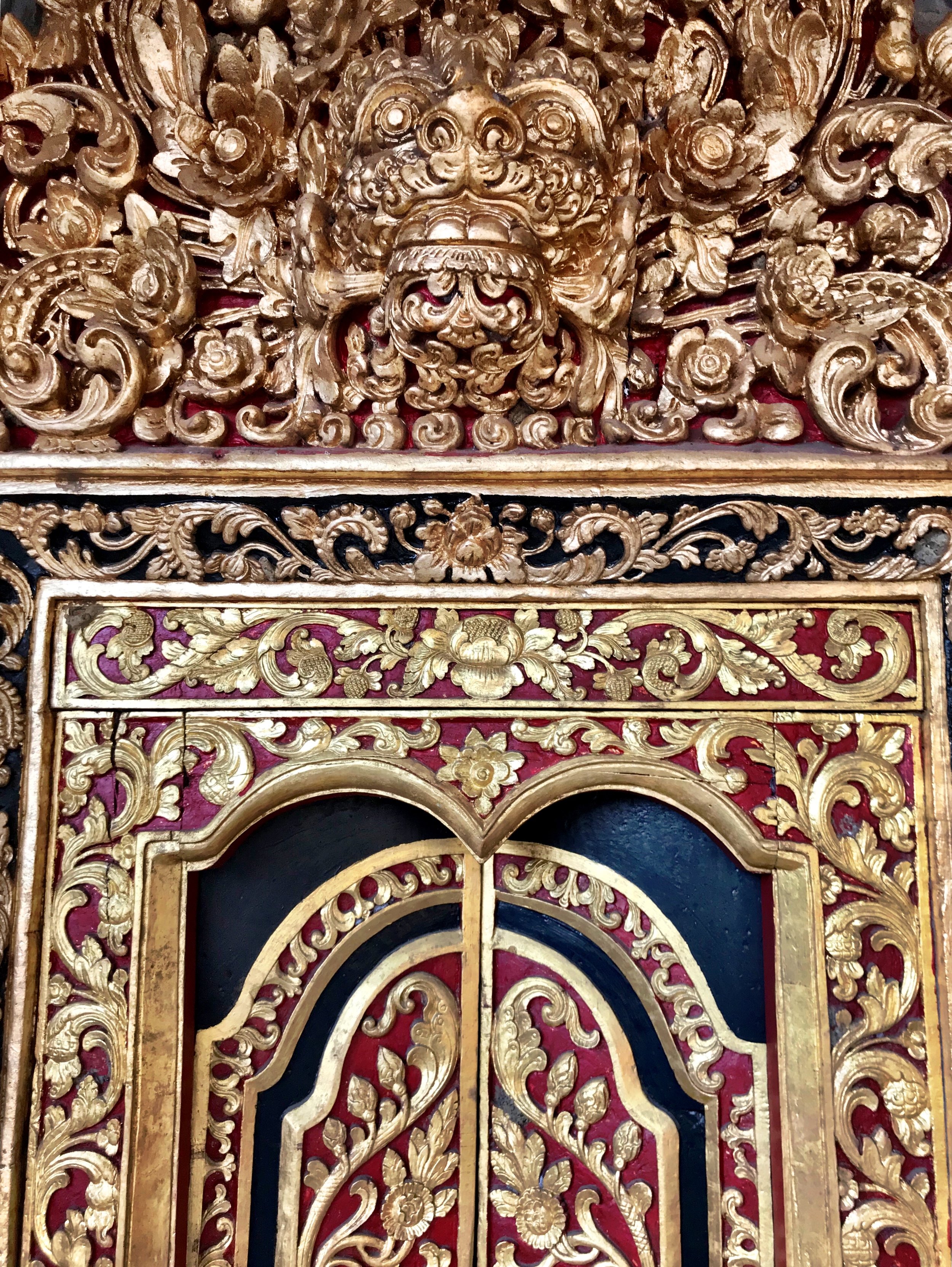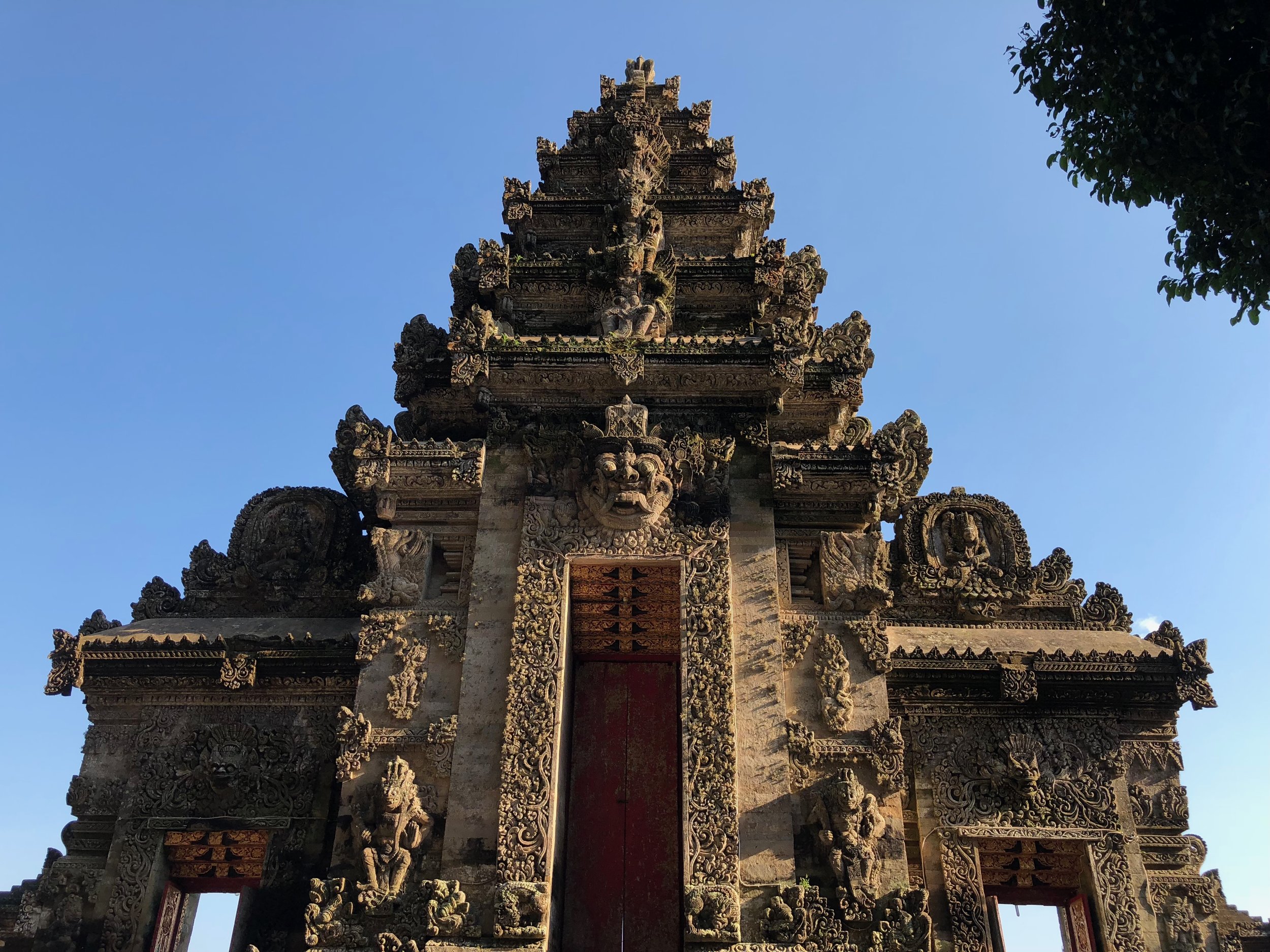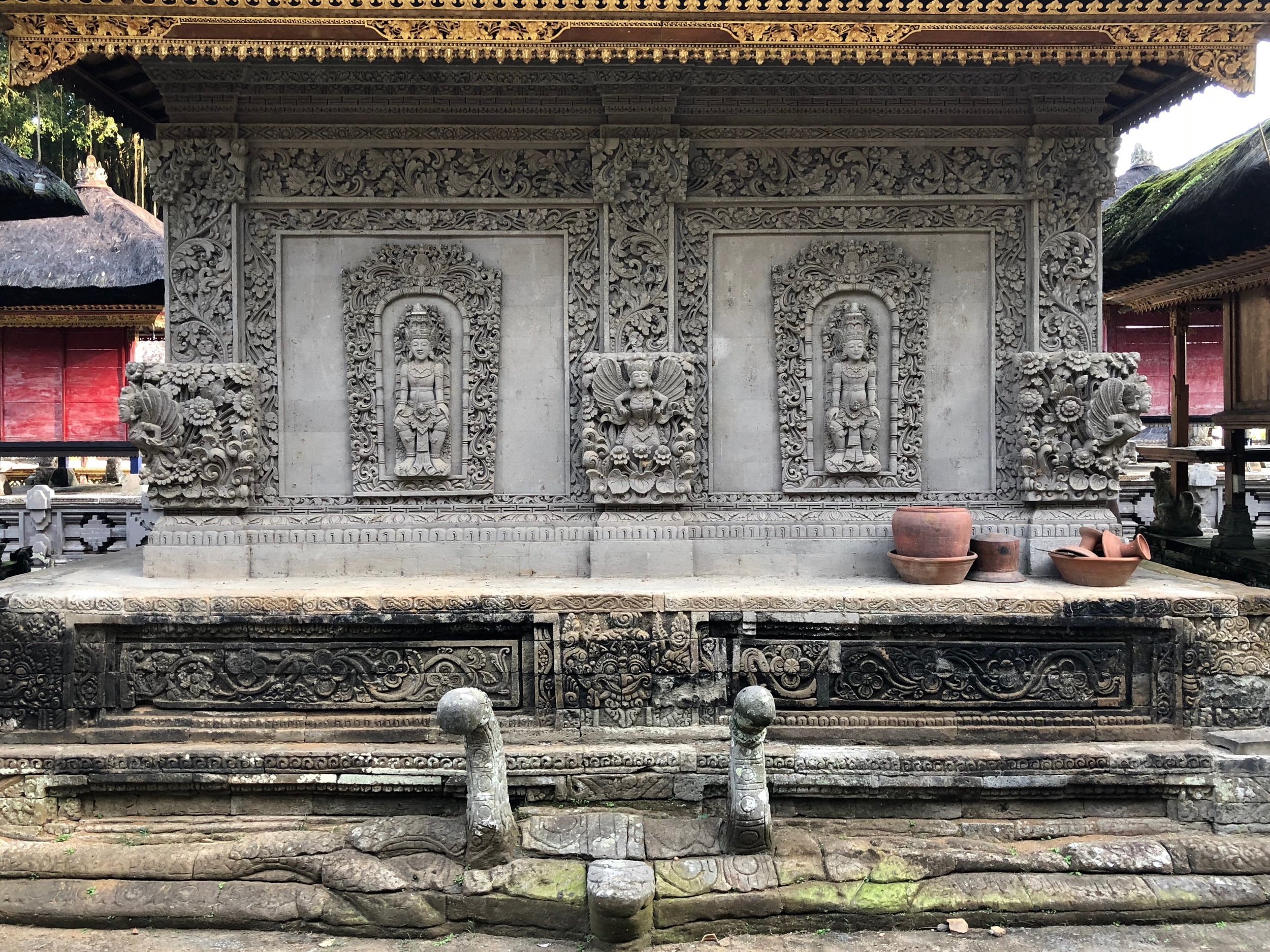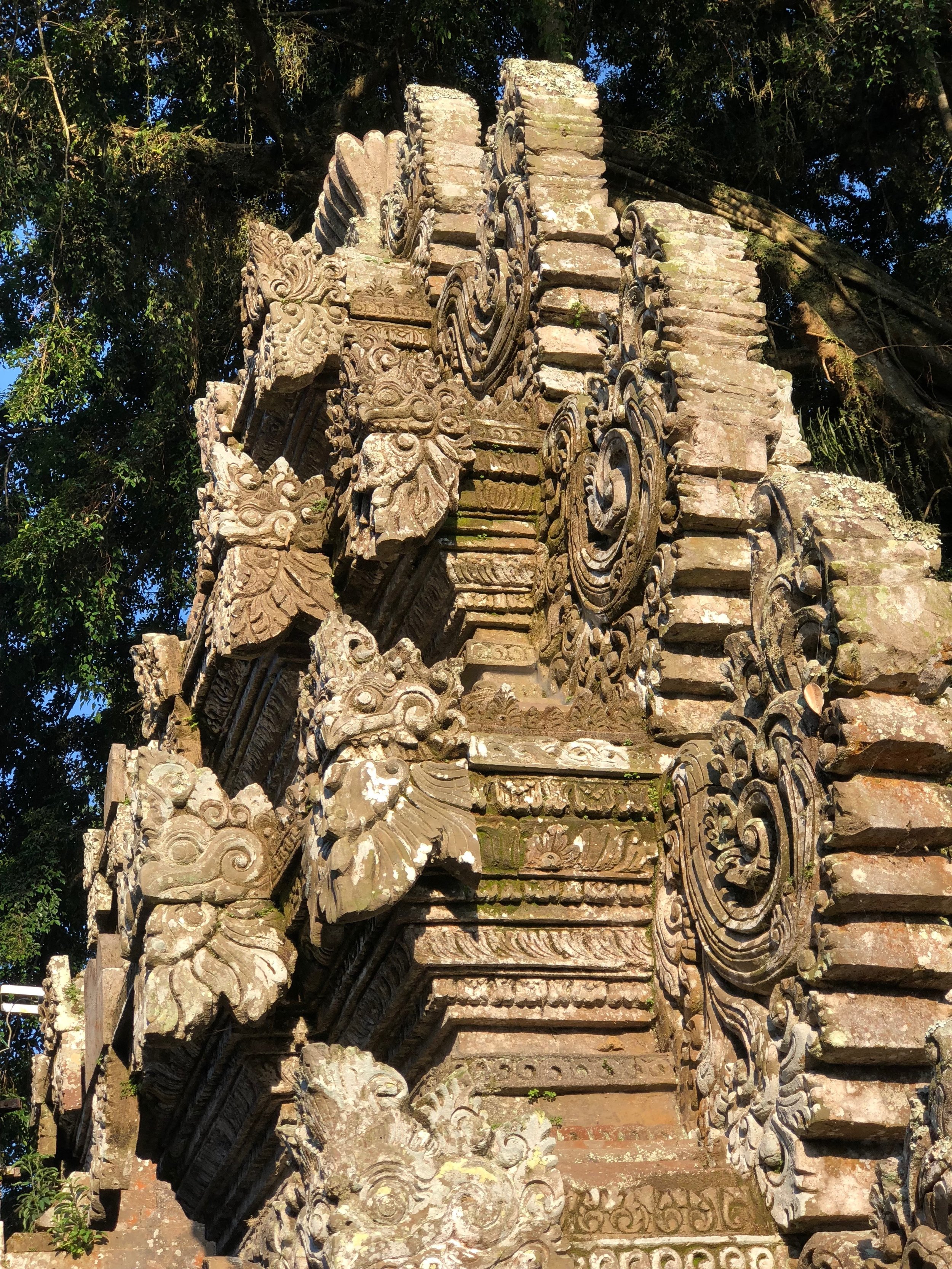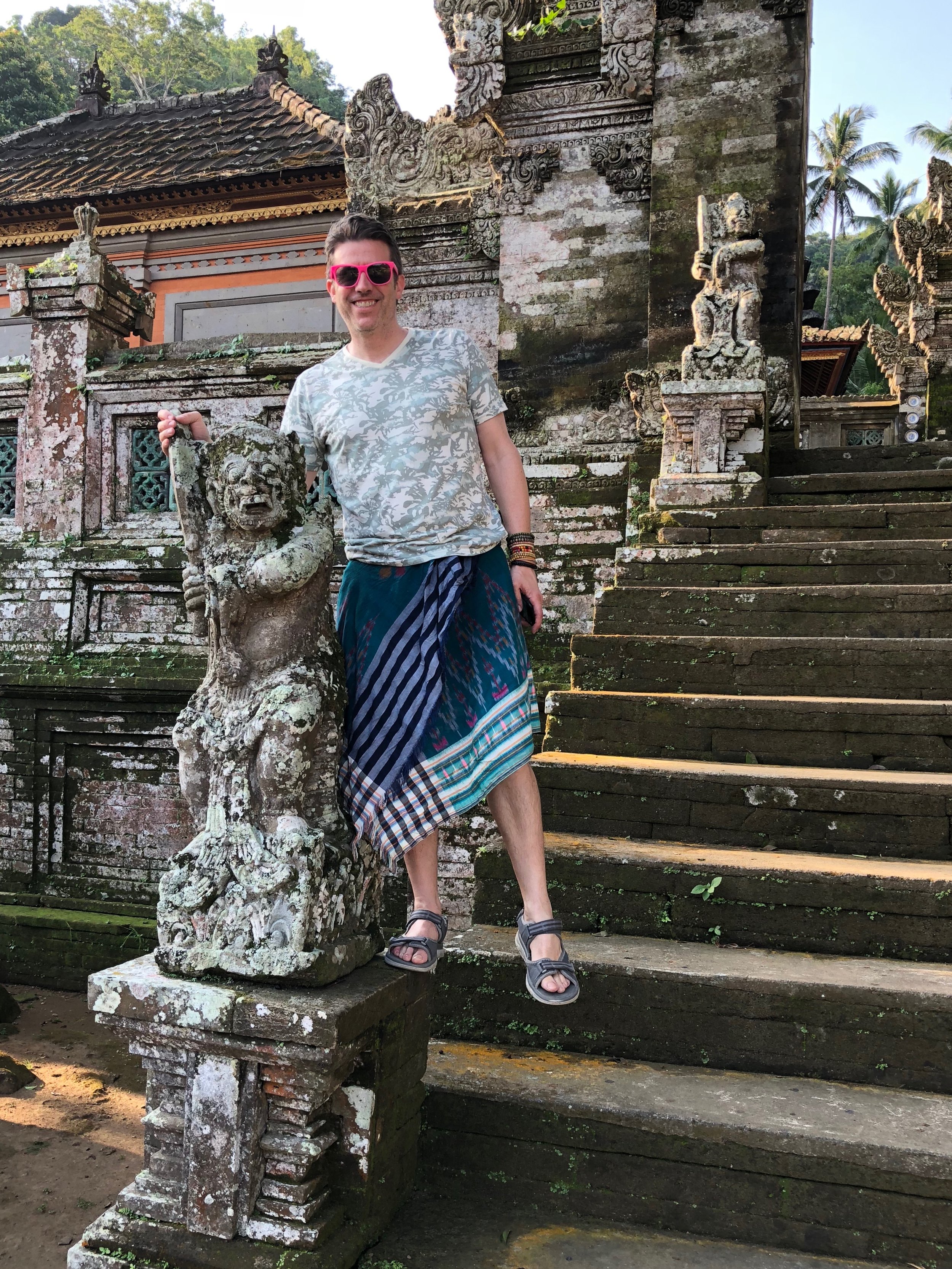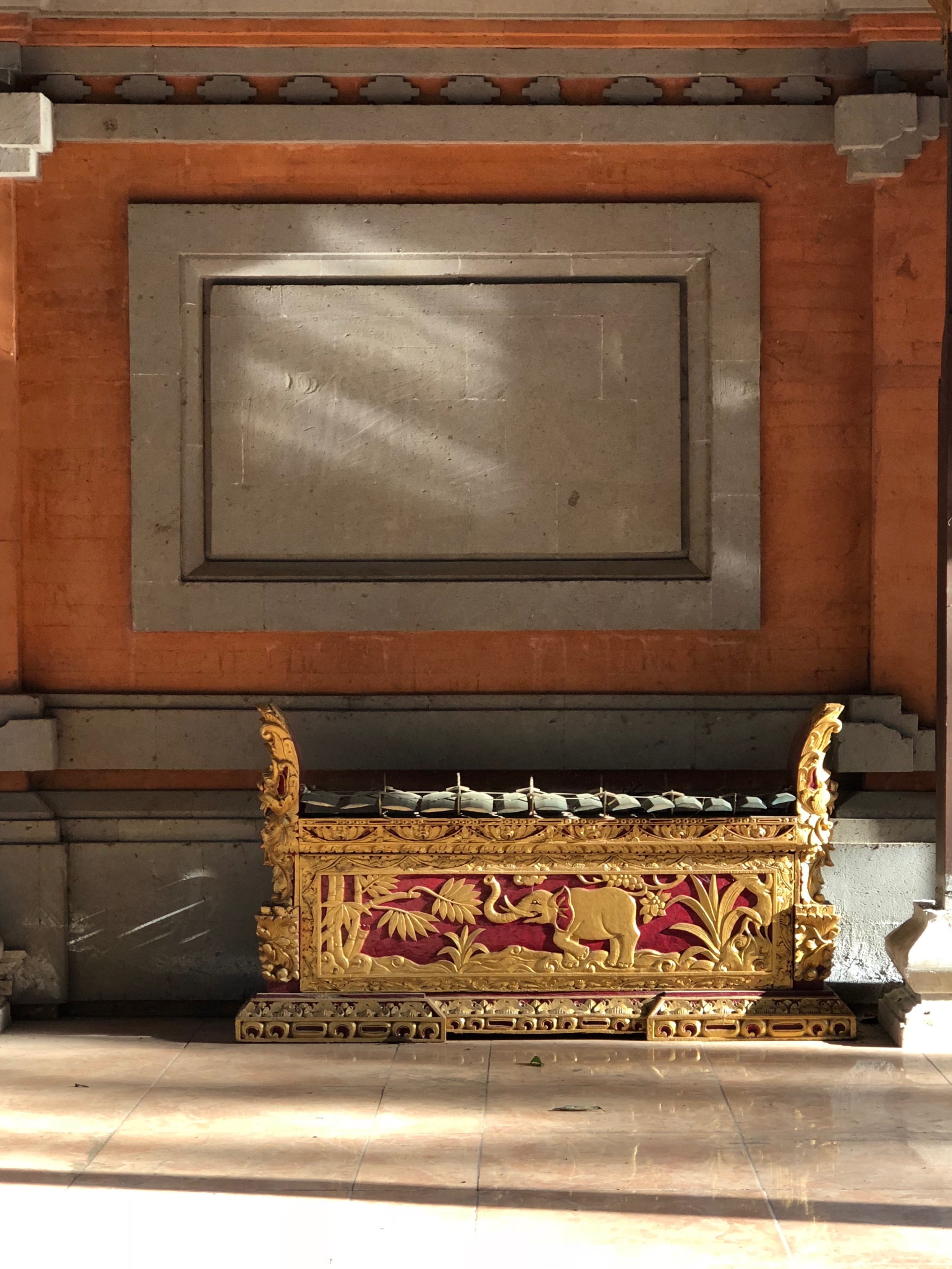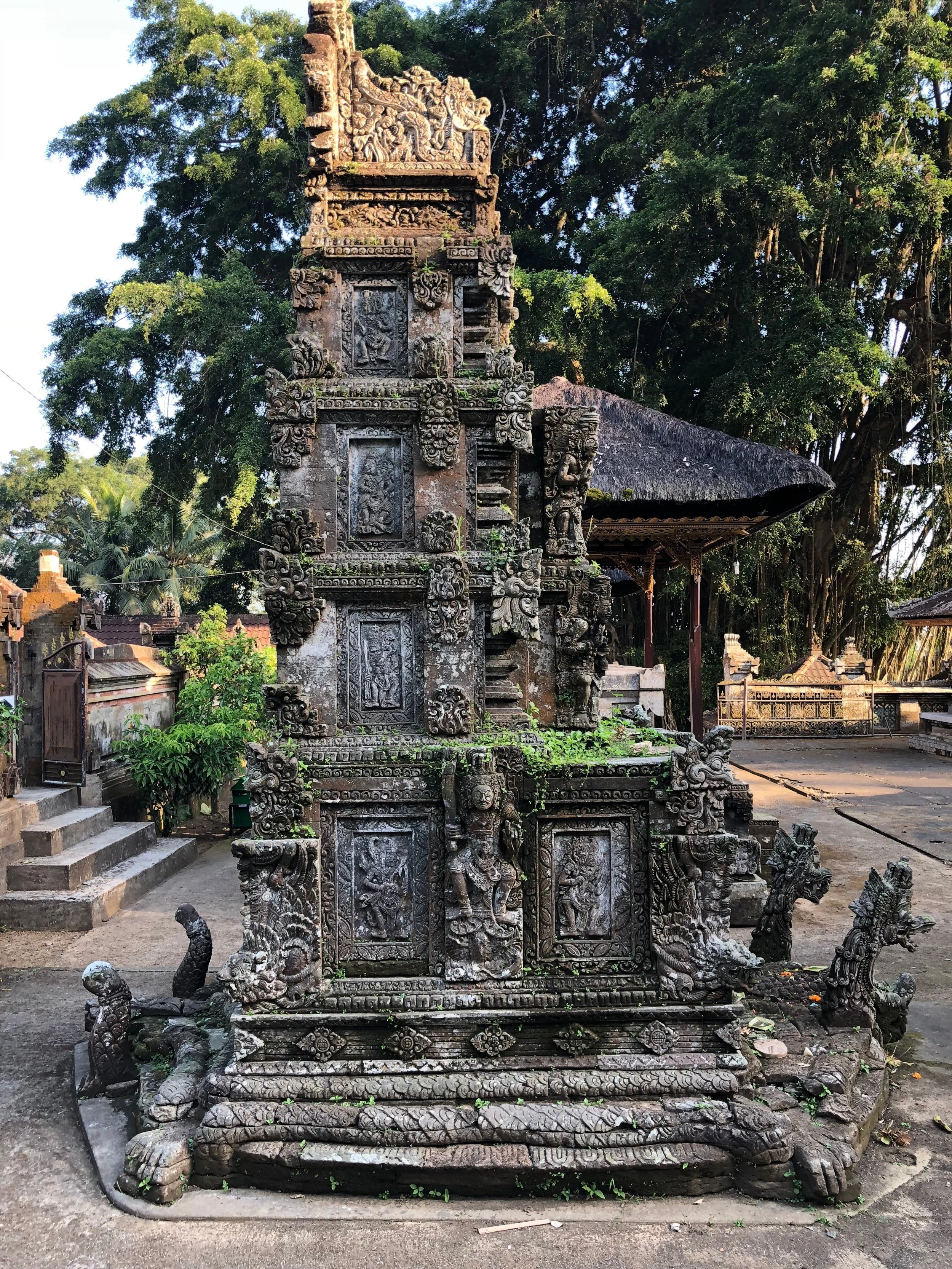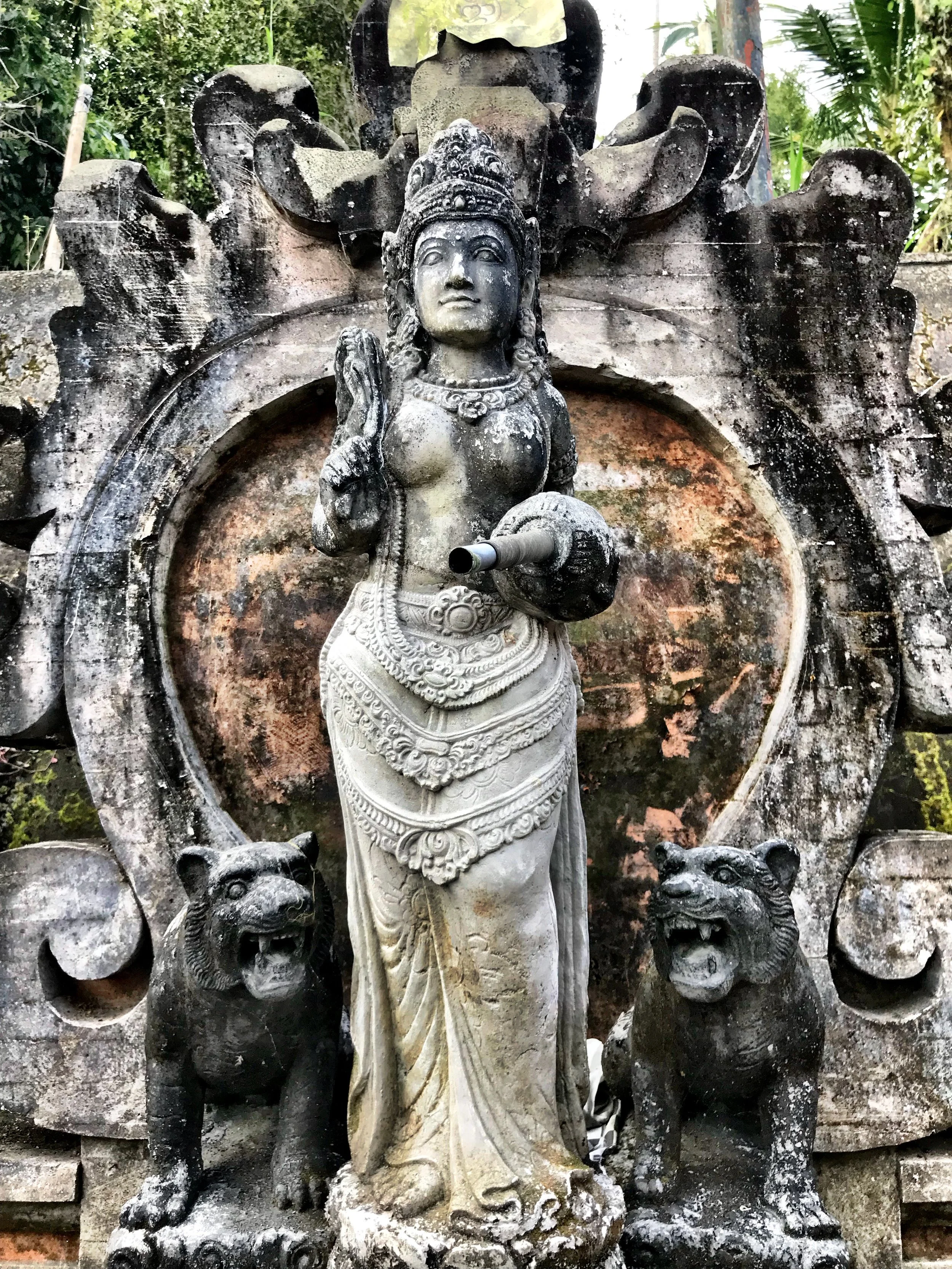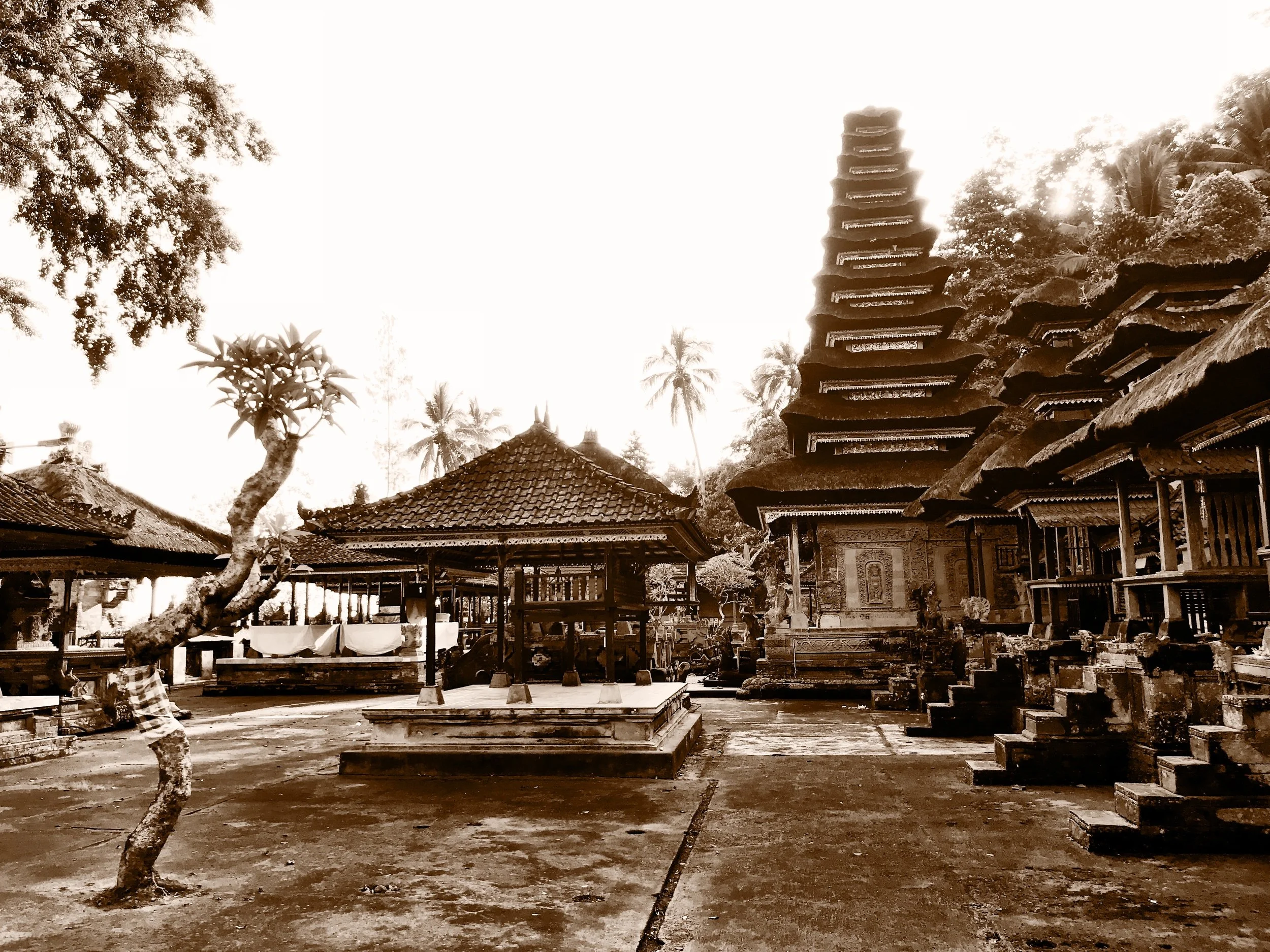The parts of a Bali temple explained, from the bentar to padmasana to kulkul, in this most sacred of temples, which sports a truly giant banyan.
Pura Kehen is dedicated to the Hindu god of fire
On our fourth day in Bali, we arrived at Pura Kehen, an impressive state temple located in the village of Cempaga in the Bangli Regency. Although it’s the largest and most sacred of the region, the temple was blissfully beyond the tourist radar and appealed to our desire to experience the quieter side of Bali.
A glimpse of the village down the hill through the main entrance of Pura Kehen
Smaller shrines on the temple complex are resting places for ancestral spirits during temple ceremonies
You have to wear a sarong like Duke when visiting a temple on Bali
The ancient temple compound was erected during the 9th century and was known as Pura Hyang Api, dedicated to the supreme being Agni, the Hindu god of fire. When sages moved from one ashram to another, it was customary to carry fire along. A couple of centuries later, the temple was renamed Pura Hyang Kehen, derived from the Balinese word keren, which translates to “flame.”
“The bug-eyed, fang-baring disembodied head of Bhoma prevents malevolent spirits from entering the temple grounds. ”
The main staircase of Pura Kehen features frightening guardian statues from the Hindu epic, the Ramayana
Duke was enamored with Pura Kehen, though Wally would say it’s B-list
Built upon the slope of a hill, the temple is reached from the street by a steep 38-step staircase flanked by a pantheon of stone guardian statues from the Hindu epic the Ramayana. At the top, overlooking the grand gateway, is the bug-eyed, fang-baring disembodied head of Bhoma, whose purpose is to prevent malevolent spirits from entering the temple grounds. We were sure to follow proper etiquette and wore our sarongs, which our driver Made (Mah-deh) expertly tied for us several times throughout our trip.
We loved spotting Bhoma’s head at temples. He’s the offspring of the deity Vishnu as Vahana, a wild boar, and Dewi Pertiwi, the Earth goddess
Bhoma, with only his head left, guards temple entrances
Smaller candi bentar gates divide courtyards on the temple complex
Weather-worn statues, ornate detailing and lichen-covered stone are typical at Balinese temples
Just beyond the entrance, you’ll find an assortment of blue and white Dutch Delftware pottery, including plates and bowls, embedded in the exterior walls surrounding the second courtyard — a relic of the Dutch occupation of the island. I paused to admire one that depicted an idyllic farm scene, including a watermill, ducks and oak tree.
This wall, like the main gate, is designed to deter menacing ground-dwelling spirits from gaining entry. The enclosed courtyard beyond includes a pavilion for gamelan musicians and is used for traditional dance, feasts and puppet performances during festivals.
We entered the third and most sacred courtyard through an elaborate symmetrically split gate known as a candi bentar. The gate resembles a jagged triangle separated vertically and split in two. Its sides symbolize the balance between the positive and negative forces of the universe. There’s no decoration on the inner parts of the gate.
Candi bentars are dramatic features of many Balinese temples, and represent the split halves of Mount Meru
Candi bentars are, not surprisingly, also called split gates
There’s no ornamentation on the interior of these gates
The gateway is flanked by fearsome sword-bearing bedogol, the Balinese name for the guardian statues standing on either side of the entrance. Of course Wally was immediately drawn to these diabolical figures. I later learned that the pair are typically characters that complement each other, such as younger and older brothers.
The impressive principal shrine of Pura Kehen is located here. Known as a Meru tower, the elaborate 11-tiered pagoda symbolizes the mythical Mount Meru, the Hindu holy mountain where the gods dwell. The number of levels are always odd, three, five, seven, nine or 11, and reflect the importance of the patron deity. Eleven is associated with the highest order or supreme being. Mountain gods enter and inhabit the Meru through an opening in the top when visiting the Earth during temple ceremonies. Each tier is covered with thatched black hair-like fibers obtained from the trunks of arena palms. According to Indonesian folklore, the spirit known as Wewe Gombel nests in this type of palm, where she keeps children she has stolen away from neglectful parents.
The taller the Meru, the more significant the deity
Adjacent to the Meru tower in the northeastern corner of Pura Kehen is another sacred monument known as a padmasana, dedicated to the Hindu trinity of Brahma, Vishnu and Shiva. The uppermost feature is an empty stone throne, known as a lotus throne, which reminded me of a holy version of the plastic booster seats used to elevate small children at a restaurant table. This seat is reserved for the immeasurable and formless Widhi Wasa, the All-in-One God. The entire structure is covered with bas-relief and rests atop the stone shell of a cosmic world-carrying tortoise, Bedawang Nala, whose perpetual movement is thought to be the cause of the island’s frequent earthquakes. A pair of snakes coiled around the turtle’s body represent our earthly needs: safety, food, shelter and clothing.
This intricately carved padmasana shrine, or lotus throne, is dedicated to the Hindu trinity of Brahma, Vishnu and Shiva
The door detail on the entrance gate shows the god Vishnu, riding his eagle mount Garuda and battling a pair of rakshasa demons
A curious feature of the pura is its unusual drum tower. The kulkul, a slit, hollowed log that resonates like a drum when struck, is suspended high upon a platform amongst the intertwined branches of the largest ancient banyan tree we’ve ever seen.
Wally climbs in the roots of the largest banyan tree he’s ever seen
This no-longer-working fountain might bear the icon of Dewi Sri, the Balinese rice goddess
A shrine surrounded by bidadari, celestial female spirits, emerging from clusters of lotus flowers
One of the most beautiful temples of our visit, it’s well worth venturing out to. We arrived about an hour before Pura Kehen closed, and we were alone, aside from two other foreign couples wandering through — and an elderly local woman whose insistent calls tried, unsuccessfully, to draw us over to see what she was selling. –Duke
“The spirit Wewe Gombel nests in arena palms, where she keeps children she has stolen away from neglectful parents.”
Pura Kehen
Cempaga
Bangli Sub-District
Bangli Regency
Bali 80613
Indonesia


